Does your home offer any of the perks some buyers will pay more for?To understand how much your home is worth, you have to know what affects its value. The appraisal of a home value is an estimate tool for extrapolating the real market value of your home, based on existing home-related data and actual sales prices in your area. Thousands of data points correlate with home values and sale prices — some of which are obvious (like the condition of the home) and some that aren’t. Here are several surprising things that can affect either the existing value of your home or the price someone is willing to pay for it, all based on data. 1. Proximity to a Starbucks How far do you have to drive to get a Frappuccino? If the answer is “not that far,” you’re in luck. A 2015 Zillow report found that, between 1997 and 2014, homes within a quarter-mile of a Starbucks increased in value by 96 percent, on average, compared to 65 percent for all U.S. homes, based on a comparison of Zillow Home Value Indexdata with a database of Starbucks locations. To evaluate if this effect is isolated to Starbucks, the research team looked at another coffee hot spot (one with particular pull on the East Coast): Dunkin’ Donuts. The data showed that homes near Dunkin’ Donuts locations appreciated 80 percent, on average, during the same 17-year period — not quite as high as homes near a Starbucks, but still significantly above the 65 percent increase in value for all U.S. homes. 2. Blue kitchens and blue bathrooms Beyond America’s obsession with curb appeal, what’s inside your house counts a lot too — especially the colors you paint the rooms (particularly the kitchen). According to Zillow’s 2017 Paint Color Analysis, which examined more than 32,000 photos from sold homes around the country, homes with blue kitchens sold for a $1,809 premium, compared to similar homes with white kitchens. Blue is also a popular bathroom shade. The same analysis found that homes with pale blue to soft periwinkle-blue bathrooms sold for $5,440 more. Walls painted in cool neutrals, like blue or gray, can signal that the home is well cared for or has other desirable features. 3. Trendy features Joanna Gaines’ aesthetic is permeating more than just your YouTube search history. Zillow listings mentioning the shiplap queen’s favorite features — like barn doors and farmhouse sinks — sell faster and for a premium, according to a 2016 Zillow analysis of descriptions of more than 2 million homes sold nationwide. Listings with “barn door” in the description sold for 13.4 percent more than expected — and 57 days faster than comparable homes without the keyword. Meanwhile, listings touting “farmhouse sink” led to a nearly 8 percent sales premium. Sellers can use the listing descriptions to highlight trendy details and features that might not be noticeable in the photos. 4. How close you are to a city If you own a home in a major American metropolitan area, you’re most likely sitting on a significant (and rapidly appreciating) financial asset. Case in point: Home values in the New York, NY, metro area are worth $2.6 trillion, per a recent Zillow analysis. The average urban home is now worth 35 percent more than the average suburban home. Since 2012, the median home value in urban areas has increased by 54 percent, while the median home value in suburban areas is up just 38 percent. On Point Homevestments
0 Comments
A little design magic can make even the tiniest bathroom feel spacious.Small bathrooms aren’t the easiest spaces to work with. They’re usually cramped and crowded, with limited natural light and awkward layouts. Whether it’s your powder room or your apartment bathroom that’s cramping your style, here are a few tips for making any small bathroom seem bigger — no wall demolition required. 1. Brighten the room Bring in as much light as possible. Light, bright rooms always feel more spacious than dark and drab ones.
2. Add mirrors Install larger — and more — mirrors than you typically would in a bathroom. The reflected light will open your small space into one that feels more spacious. 3. Streamline storage Keep all storage as flush with the walls as possible, because anything that sticks out will chop up the space and close it in. Install recessed shelving and medicine cabinets instead. 4. Eliminate clutter Nothing crowds a space faster than clutter. A good rule of thumb: If you don’t need it there, store it elsewhere. Pare what you keep in the bathroom down to the bare necessities. 5. Raise the bar Raise your shower curtain bar all the way to the ceiling — it’ll draw your eyes up and make the ceiling seem taller, creating the illusion of a larger space. The same goes for any window treatments. Raising sheer curtain panels to the ceiling also creates the illusion of a larger window, making the small bathroom seem larger. 6. Hide the bathmat Having a bathmat on the floor all the time can make your bathroom feel smaller. Put your bathmats away when you’re not using them to expose the flooring and make the space appear larger. 7. Install a sliding door Swinging doors can take up almost half the room, depending on how small the space is. A sliding barn door or a pocket door won’t encroach on your bathroom’s already limited real estate. 8. Think pedestal sink The added bulk of a full vanity takes up valuable space, so try a pedestal sink instead. You may not have a place for soaps or towels on the vanity, but there are plenty of wall-mounted solutions perfect for bathroom accessories. 9. Choose light-colored flooring Even if your walls and ceiling are light and bright, a dark floor will negate their effect and close the space in. Keep the flooring light to create a space with a bright and open flow. 10. Go frameless, clear and cohesive in the shower Clear glass shower doors make the room appear larger, while frosted glass breaks up the space and makes it seem smaller. The same goes for a frame around the glass. A frame can make the area seem choppy rather than smooth and open. Additionally, install the same shower tile from floor to ceiling. The seamless look from top to bottom adds cohesion and openness. Just a few changes to your small bathroom can make dramatic differences in how open it feels. Once you’ve tried these tips and tricks in the bathroom, apply them throughout your home! It’s all about creating the illusion of space. On Point HomevestmentsYour diploma represents a vital step on the road to success. Next up: establishing a good credit history.If you’re a recent college grad, you’ve likely heard speeches about pursuing your passions and believing in yourself, but you probably haven’t heard much about establishing a good credit history. Here’s what you need to know. It matters — a lot Qualifying for mortgages, auto loans, apartments and even jobs has become dependent, to some degree, on your credit history. Find out where you stand The first step is knowing your current status. Access your credit report by visiting Annual Credit Report.com. Make sure all the information on the report is accurate, because errors can — and do — occur. Damaging discrepancies need to be corrected right away. Build a credit history Your credit history is one of the key factors making up your credit score, the all-important three-digit number that determines the rates you pay on everything from credit cards to mortgages to auto insurance. The best time to build a credit history is when you’re young, and the best way to start a credit history is to get a credit card. This may sound counterintuitive, but if you don’t have a credit card, the scoring system has no information to go on for assessing your creditworthiness, so you come across as a credit risk. Research credit card options While many of the major issuers offer cards geared toward new applicants with little or no credit history, you might stand a better chance of getting a card at a credit union. Size up your card options on a site such as LowCards.com. Gas cards and department store cards are also typically easy to get and can be a good place to start if your options are limited. Another possibility — especially if you don’t have any credit history or your credit is damaged — is to get a secured card. These cards work just like a regular credit card, except that you place a security deposit with the credit card issuer to obtain one. They typically require $200 or more for the deposit, and this amount becomes the credit line for the account. Use credit responsiblyThe way to keep your credit score high is to spend responsibly within your means. Don’t use more than 30 percent of your available credit, and pay off your balances in full and on time every month. Your payment history contributes to 35 percent of your credit score, so this point is important. Chip away at student loans Student loans are a form of debt, and are therefore taken into account as part of your credit score. And while you may be worried about a lender seeing all of this debt (likely tens of thousands of dollars), there’s no need to be concerned if you’re handling your finances properly. Just be sure you’re managing your debt obligations and repaying them on time, every time. On Point HomevestmentsLearn how to navigate the deals and come out on top.Why pay full price for something if you can get what you want, plus another item, at a discount? This is called bundling, and researchers have been studying the pros and cons of it for decades. Although many consumers think of bundling as a modern concept — it’s often used to combine TV, internet, and phone services, for example — the practice has been around for years in a variety of forms. As a homeowner or renter, navigating the benefits and pitfalls of bundling household services means using a little common sense and a bit of economic reasoning. It also requires being aware of when and how products are bundled. What is bundling? Everything from fast-food combo meals to items in a two-for-one deal could be considered bundled, especially if sold at a lower price than the separate parts. For households, bundling might mean purchasing home and car insurance together at a slightly lower rate — the average American, for example, saves 16 percent when bundling the two policies, according to the latest data from InsuranceQuotes.com. The possibilities for bundling household services abound, according to Andrew Schrage, co-owner of Money Crashers Personal Finance: “You might find someone on Craigslist who can help with electrical, plumbing, and air-conditioning/heating needs. You’ll likely get a discount, because you’ll be bringing that person more work.” Mixed versus pure bundling There are several types of bundling, each with varying levels of consumer benefit, according to George John, a professor at the University of Minnesota’s Carlson School of Management. As a homeowner, you’ll most likely encounter these two types:
In such a scenario, consumers are worse off, because the seller increases its profit by requiring such a deal. The company can get away with it “because they have a very strong market position,” John says. Understanding your needs is key Why are so many services offered in bundles? “This is somewhat controversial, but it turns out that companies make more money when they offer you discounts on those bundles, because consumers get tempted into buying it,” John says. To win at the bundling game, keep your needs in mind, and stay strong in the face of alluring deals. Bundles are a true victory for consumers only if they genuinely need all parts included in it. When consumers fail to shop around for the other items in the bundle and go for the packaged deal instead, they often walk away with products they don’t want or need — and sometimes pick up lesser-quality goods along the way. Finally, the touted time-saving advantage of combining bills, which service providers sometimes use as a selling point, may not economize that much time, especially if a consumer would be signing up for automatic bill payments anyway. Service providers “want to take your attention away from the fact that it’s actually a price move. They want to tell you that you’re getting a better experience if you bundle,” John says. Client-controlled bundling Consumers triumph when they control what’s in the bundle. Have a nanny who you pay a little extra to make dinner each night? That’s a bundle. “It’s totally a good deal, because you know the benefit that comes from having the same person watch your child and cook for you. You’ve made the judgment,” John says. At the end of the day, discipline is key. Saying no to unnecessary items, looking for other options instead of pure bundling, and refusing to be duped by false benefits will ensure you win the bundling game. On Point HomevestmentsHappy owners, happy tenants — it all starts with the right property manager.You would never turn your home over to a stranger, so choosing a property manager shouldn’t be any different — finding one you trust is vital. “You are entrusting probably one of the biggest investments you’ll make into the hands of someone else, so you want to make sure you feel confident that they’ll handle things the way you want them to,” says Grace Langham, CEO of Nest DC, an award-winning boutique property management firm in Washington, D.C. Dependability and trustworthiness are two key points all homeowners should keep in mind when assigning their home or condo to the loving care of a third party. But before handing over the keys, consider these six other factors to help you find the right property manager. Communication With so many players involved — owner, tenant, and manager — communication is critical. Some owners prefer lots of updates, while others want few. Regardless of your desired amount of communication, the quality of it is crucial. A property manager’s availability and response rate get to the very heart of their job. In your initial contact, look for clues about their speed, courtesy, and availability. “Once signed on, a good manager will do what it takes to keep you in the loop, whether you prefer emails, phone calls, or texts,” Langham says. Residents When it comes to renters, a property manager’s duty is twofold: Find quality residents, and ensure they are treated fairly. Happy renters often stay in a residence longer, and are more reasonable when things break. That said, finding good residents requires legwork. “Bad tenants can be one of the most costly things for an owner,” says Nathan Miller, president and founder of Rentec Direct, a property management software company. Evictions are expensive, especially when owners are forced to forgo several months’ rent, and damage can be costly. That’s why running a credit check and performing a background screening for criminal and eviction reports are musts, according to Miller. Fees Property management fees tend to be fairly standard, Miller says — usually between seven to 15 percent of a month’s rent, but most often around 10 percent. Sometimes, a condo may cost slightly less than a stand-alone house because there’s less home and yard to maintain. The owner is also on the hook for maintenance costs, and often pays a finder or leasing fee — up to a full month’s rent — when a new resident moves in Ask if you will still be charged, even if the unit stands empty. Some property managers also charge a lease renewal fee and sometimes tack on a project management fee when dealing with excessive bureaucracy or paperwork, such as insurance claims. Verify the fee structure and services provided before signing any contract. House visits and other specs When it comes to inspections, a property manager should be proactive. That means taking a peek at your property no less than once (and maybe even twice) a year to ensure that everything is in good shape. Such time-consuming tasks mean it’s important for a property manager to maintain a reasonable caseload. Miller says his ideal property manager oversees between 500 to 1,000 properties. “Once they get above that size and they’re managing many, many thousands of units, you’ll lose the personal touch,” he says. Finally, you want to find a property manager that specializes in a type of unit: single-family homes, apartment complexes, or high-end houses, for example. Earning potential To maximize a home’s earning potential, property managers should know how to deftly market a unit so that it doesn’t stay empty long. This includes everything from posting it on well-known rental websites to taking quality photos that make it pop. Miller says the property manager should also ensure a home is leased at market rent, and analyze that rate semiannually. You want to know you’re not being shorted income by charging too little. Technology Finally, the proper software can indicate that a management firm has what it takes to succeed. “We’re lucky to be a company that’s eight years old,” Langham says. “We started with all this technology that’s really friendly to the millennial generation, which is a lot of the renter base.” Collecting rent and submitting maintenance requests via an online interface makes interactions between all parties a breeze, meaning owners and tenants can move on with their busy lives. After all, at the end of the day, that’s what having a property manager is all about. On Point HomevestmentsNo matter your budget, there's always an upgrade or two that'll up the resale ante.Whether your home improvements are for you or potential buyers, consider their impact on your home’s potential resale price before picking up your toolbox (or the phone to call a contractor). A brand-new kitchen or bathroom will undoubtedly wow potential buyers, but there’s no guarantee you’ll recoup the money you put into those pricey remodels. To help you navigate the choices that lead to the best return on investment, we asked two industry experts (and one enthusiastic DIYer) to weigh in. Kitchen renovations “Renovating the kitchen is always the biggest way to add value to your home,” says Grace Fancher, real estate agent at Kansas City firm Sarah Snodgrass. “People love to cook, and everyone tends to gather in the kitchen. If you add seating, such as an island with barstools, buyers go crazy for that.” A full remodel is a major investment, but smaller projects make a big difference if you can’t — or don’t want to — go all out. “Nicer appliances really stick out to potential buyers — even if you’re planning to take them with you,” Fancher says. She also suggests replacing tired finishes with fresh, neutral materials. “You don’t want to be too trendy, but you want it to look up-to-date,” she says. “Everyone loves clean, white subway tiles now, but they’re really a timeless look.” Replacing dated countertops (quartz is your best bet, according to Fancher) and flooring is also worth the time and money. Bathroom updates The smallest rooms in the house can have a big impact on its value, so Fancher suggests adding a second bathroom or upgrading existing ones so your home features at least two full baths. Joe Monda, co-owner of Seattle-based general contracting firm Promondo, agrees. “People are spending more on upgrading their houses before listing them,” he says. “They really want to maximize the potential house value.” But if you’re remodeling a bathroom just to put your house on the market, keep it simple. “Most people don’t want to pay for upgrades, so you want it to be a neutral space that doesn’t look straight out of the big DIY warehouse stores — even if it is,” says Fancher. She adds that an easy solution is spending a little more on details, like high-quality towel bars and upgraded hardware for those big-box store vanities. Not in a position to remodel? “Re-grouting tile, or even just using one of those grout paint pens, gives any bathroom a fresher look,” says Sharyn Young, a self-proclaimed DIY addict from Minneapolis. Lighting upgrades “The brighter a room feels, the bigger it looks,” says Fancher. “And when you’re selling, you want every space to look as big as possible.” She recommends replacing flush-mount ceiling lights with recessed and/or pendant lighting — a relatively cheap upgrade that looks modern and makes a huge impact. “LED lighting has changed everything,” says Young. “There are so many readily available, inexpensive options now that are easy to install. I added Ikea under-cabinet lighting in the kitchen of my last house, and I was amazed at how that one simple upgrade made the space feel larger and cleaner.” Fresh paint Like lighting, a new coat of paint can also make a space feel cleaner and brighter. Stick to neutral shades, such as light gray and beige, and if you don’t have time or budget to do the whole house, start with the living areas you see when you first walk in. An even quicker fix is refreshing just the trim. “Beat-up, dirty trim can give buyers a subtle impression that the whole house is dingy,” Fancher says. “Repainting gives a sharper look and shows the buyer that you’ve taken care of the house.” Landscape improvements “A lot of people overlook how important landscaping is, especially when you’re selling in the spring or summer,” says Fancher, adding that you can increase curb appeal by just putting down new, dark-colored mulch, if you don’t want to spend a lot of money on planting. Monda suggests paying special attention to the entry. Repair or replace any damaged stepping stones, concrete paths, and porch plants, then give the front door a fresh coat of paint and add some potted plants. “You want people to be excited to walk in the door,” he says. On Point HomevestmentsEverything you need to know about buying a home — on one index card.A home is often the biggest financial investment you’ll make in your lifetime. In fact, a recent Zillow analysis reports that the typical American homeowner has 40 percent of their wealth tied up in their home. 1. Buy for the long run A home is a significant investment, not to mention a linchpin of stability. According to the Zillow Group Consumer Housing Trends Report 2017, the majority of Americans who sold their homes last year had lived in their home for at least a decade before selling. Some are even staying for the long haul. Almost half (46 percent) of all homeowners are living in the first home ever purchased. In short: Buy a home you want to live in for at least five years — one equipped (or ready to be equipped) with the features and space you need, both now and in the future. 2. Buy to improve your life, not speculate with money Your home is more than a financial investment; it’s where you sleep, eat, host friends, raise your children — it’s where your life happens. The housing market is too unpredictable to buy a (primary) home purely because you think it will net a big short-term financial return. You will most likely be living in this home for several years, regardless of how it appreciates, so your first priority should be finding a home that will meet your needs and help you build the life you want. 3. Focus on what’s important to you Today’s housing market is short on inventory, with 10 percent fewer homes on the market in November 2017 than November 2016. So, focus on finding a home you can afford that meets your needs — but don’t get distracted by shiny features that might break your budget. Nice-to-have features often drive up the price tag for things you don’t particularly value once the initial enjoyment wears off. Make a list of your basic needs, both for your desired home and for your desired neighborhood. Stick to finding a home that meets these needs, without buying extra stuff that adds up. 4. Set a budget and stick to it It’s important to set a budget early — ideally before you even start looking at homes. In today’s market, especially in the more competitive markets, it’s incredibly easy to go over budget — 29 percent of buyers who purchased last year did. The most common culprit? Location. Zillow’s data indicates that urban buyers are significantly more likely to go over budget (42 percent) than suburban (25 percent) or rural (20 percent) buyers. There’s nothing inherently wrong with that. Local schools matter, and psychologists tell us that a short commute improves your life. But be realistic about your local market and about yourself. Know what you’re willing to compromise on — be it less square footage, home repairs or a different neighborhood. 5. Aim for a 20 percent down payment If you can afford it, a 20 percent down payment is ideal for three reasons:
6. Keep a six-month strategic reserve While a down payment is a significant expense, it’s also important to build up a strategic reserve and keep it separate from your normal bank account. This reserve should cover six months of living expenses in case you get sick, face an unexpected expense or lose your job. A strategic reserve will not only save you from financial hardship in an emergency but also provide peace of mind. When we accumulated a strategic reserve, my wife and I finally felt ready to build for our future. Without it, we were living from paycheck to paycheck, anxiously managing our cash flow rather than saving or budgeting. 7. Get pre-approved, and stick with a fixed-rate mortgage The pre-approval process requires organizing all your paperwork; documenting your income, debt and credit; and understanding all the loan options available to you. It’s a bit of a pain, but it saves time later. Getting pre-approved also shows sellers that you’re a reliable buyer with a strong financial footing. Most importantly, it helps you understand what you can afford. There are a variety of mortgage types, and it’s important to evaluate all of them to see which is best for your family and financial situation. Those boring 30- and 15-year mortgages offer big advantages. The biggest is locking in your mortgage rate. In short: A 30-year fixed mortgage has a specific fixed rate of interest that doesn’t change for 30 years. A 15-year fixed mortgage does the same. These typically have lower rates but higher monthly payments, since you must pay it off in half the time. Conventional fixed-rate mortgages help you manage your household budgeting because you know precisely how much you’ll be paying every month for many years. They’re simple to understand, and current rates are low. One final advantage is that they don’t tempt you with a low initial payment to buy more house than you can afford. 8. Comparison shop to get the best mortgage Though a home is the biggest purchase many of us will ever make, most home buyers don’t shop around for a mortgage (52 percent consider only a single lender). The difference of half a percentage point in your mortgage rate can add up to thousands of dollars over the lifetime of the loan. It’s important to evaluate all the available options to make sure you’re going with the lender who meets your needs — not just the first one you contact. The three most important factors are that the lender offers a loan program that caters to their specific needs (76 percent), has the most competitive rates (74 percent) and has a history of closing on time (63 percent). 9. Spend no more than a third of your after-tax income It’s better to regret spending too little on your home than spending too much. One-third of your after-tax income is a manageable amount. This isn’t always possible if you live in a place like San Francisco or New York, but it’s still a good yardstick for where to be. 10. Be willing to walk away Buying a home is a time-consuming, stressful but ultimately rewarding endeavor — if you end up closing on a home that meets your needs. But it’s important to manage your expectations in case you don’t immediately find a home you can afford with the features you need. Always be prepared to walk away if the sellers don’t accept your offer, the home doesn’t pass a rigorous inspection or the timing isn’t right. Hold fast to your list of must-haves, stick to what you can afford and don’t overreach or settle. It’s no tragedy to miss out on any particular house. Remember that you’re playing the long game. You want to be happy 10 years from now. On Point HomevestmentsWe shed some light on buying a home as a couple so you’re not in the dark when it’s time to sign on the dotted lines.When couples start a new journey as homeowners, questions can linger as to whose name (or names) should be listed on the mortgage and title. Many couples want a 50/50 split, indicating equal ownership to the asset, but sometimes that isn’t the best financial decision. Plus, with more than one person on the loan, the legalities of who owns the home can get tricky. A home is often the largest purchase a couple or an individual will make in their lifetime, so ownership can have big financial implications for the future. Title vs. mortgage For starters, it’s important to note the difference between a mortgage and a title. A property title and a mortgage are not interchangeable terms. In short, a mortgage is an agreement to pay back the loan amount borrowed to buy a home. A title refers to the rights of ownership to the property. Many people assume that as a couple, both names are listed on both documents as 50/50 owners, but they don’t have to be. Listing both names might not make the most sense for you. Making sense of mortgages For many, mortgages are a staple of homeownership. According to the Zillow Group Consumer Housing Trends Report 2017, more than three-quarters (76 percent) of American households who bought a home last year obtained a mortgage to do so. When a couple applies jointly for a mortgage, lenders don’t use an average of both borrowers’ FICO scores. Instead, each borrower has three FICO scores from the three credit-reporting agencies, and lenders review those scores to acquire the mid-value for each borrower. Then, lenders use the lower score for the joint loan application. This is perhaps the biggest downside of a joint mortgage if you have stronger credit than your co-borrower. So, if you or your partner has poor credit, consider applying alone to keep that low score from driving your interest rate up. However, a single income could cause you to qualify for a lower amount on the loan. Before committing to co-borrowing, think about doing some scenario evaluation with a lender to figure out which would make more financial sense for you and your family. True ownership If you decide only one name on the mortgage makes the most sense, but you’re concerned about your share of ownership of the home, don’t worry. Both names can be on the title of the home without being on the mortgage. Generally, it’s best to add a spouse or partner to the title of the home at the time of closing if you want to avoid extra steps and potential hassle. Your lender could refuse to allow you to add another person — many mortgages have a clause requiring a mortgage to be paid in full if you want to make changes. On the bright side, some lenders may waive it to add a family member. In the event you opt for two names on the title and only one on the mortgage, both of you are owners. The person who signed the mortgage, however, is the one obligated to pay off the loan. If you’re not on the mortgage, you aren’t held responsible by the lending institution for ensuring the loan is paid. Not on mortgage or title Not being on either the mortgage or the title can put you in quite the predicament regarding homeownership rights. Legally, you have no ownership of the home if you aren’t listed on the title. If things go sour with the relationship, you have no rights to the home or any equity. To be safe, the general rule of homeownership comes down to whose names are listed on the title of the home, not the mortgage. On Point HomevestmentsWhen you've got to buy a house from across the country, start with a winning strategySearching for a house locally is not without its difficulties. Add hundreds or even thousands of miles to the equation, and it becomes infinitely more complicated. Though long-distance house hunting has its unique challenges, it’s not impossible. In fact, with the right agent and the convenience of modern technology, it’s never been easier to buy a house remotely. Here are a few critical factors to keep in mind when you find yourself in a home search from afar. Do your homework When it comes to long-distance home shopping, “the Internet is your friend,” remarks Meghann Shike of Synergy Realty in Nashville. “You know the neighborhoods you live around, but you know nothing about your new one. You don’t know where the mall is, the [grocery store], or the schools.” Though nothing can substitute checking out the neighborhood in person, Shike recommends looking up commute times to work, crime rates in the area, and, most importantly, how the schools rank. Even if you don’t have children or don’t plan to have children, it’s still good to know the quality of the schools for resale purposes. One of the biggest pieces of the long-distance house-hunting puzzle, however, is to make sure you’re researching who the best local real estate agents are. It’s always crucial to hire an agent you trust, but with a long-distance search the agent can make or break the experience. “You’re going to want someone local on the ground — someone who is very familiar with the city, neighborhood, and prices,” Shike says. “You need to get a feel for how that person operates. Are they available to talk to you? You’re going to have more questions than you realize, and your agent is going to need to be there to answer them.” Have a travel budget When Kyle and Samantha Steele found out they were going to be moving from Oklahoma City to Columbus, OH for Kyle’s new job, the couple looked at listings online, got in touch with real estate agents, and picked an upcoming weekend to house hunt in person. The Steeles’ agent showed them multiple houses, but nothing was quite right. Then they found out that many of the older neighborhoods in the area didn’t have great access to high-speed Internet. That’s when they decided to build. Their agent was instrumental in guiding them on their short house-hunting weekend, and in finding a builder. “[Our agent] basically helped us with everything, every step of the way,” Kyle states. “When we couldn’t find anything, she helped us find model homes in the area we’re building in, and showed us three different model homes. She answered questions, and helped us find the building company. She even helped us find a hotel for the weekend.” Inevitably, unexpected appointments came up during the building process that required one of the Steeles to be present. “We had to make an appointment to meet with the design studio to pick out the floors and the carpet,” Samantha remarks. “So far, I’ve been to Ohio twice.” The couple advises long-distance house hunters to prepare and plan ahead, especially for last-minute travel. “Be flexible,” Kyle says. “Make sure you have a few thousand dollars in reserve that you can spend on plane tickets and a hotel — because you will have to go back and forth.” From the agent perspective, Shike recommends planning a house-hunting trip that’s at least four to five days long, so you’re not cramming in tons of showings that you won’t remember at the end of the day. Know what you want When you’re in the market for a home, you should always have a running list of features you want, but it’s especially crucial when you’re buying from a distance. “I like to tell my clients to do a ‘top five.'” Shike says. “What’s your non-negotiable? Is it being able to step out the front door to walk your dogs? Do you want to walk your kids to school?” Knowing exactly what you want out of a house and location allows your agent to help you narrow down neighborhoods and homes more easily, and assist you in making an offer quickly, which is especially important in a fast-moving market. “Buyers need to get over the fear of writing an offer when they haven’t seen the house in person,” remarks Shike. “I can video chat our way through the house, but I can’t get you on a plane [to get here] in the same time the local people can who are shopping.” Overcome remote home-buyer jitters For those buyers who are nervous about making an offer sight unseen, Shike says there is the possibility of adding a clause in the contract that the sale is contingent on the buyer seeing it. Of course, there is also always the option of renting first before you take the plunge. “You could rent for the short term or get a six-month lease, which is enough time to get settled in your job or routine,” recommends Shike. “That can be nice for buyers who are a little more anxious about the process — to relieve that anxiety.” Overall, buying a house from a distance shouldn’t necessarily be looked at as a negative experience. In fact, Shike believes it can give many shoppers new opportunities, and buyers are often more excited when purchasing long distance. “It can be a nice change of pace for people,” Shike adds. “Another benefit to moving long distance is a fresh start: a new neighborhood, new culture, new people, and new experiences everywhere.” On Point HomevestmentsRule #1 of the best week off at home: Plan ahead.You don’t need to stay in a hotel and play tourist to have a proper staycation. Look no further than your own home for a staycay dreams are made of. Make no mistake, an at-home staycation doesn’t just mean a lazy weekend on the couch. Turn your humble abode into a resort made for relaxation with a few days of planning and prep work. Here’s your guide to creating the ultimate staycation. Tackle chores in advance Sure, a hotel stay comes with amenities like maid and room service, but you can have a work-free staycay with a bit of planning. Make a list of chores you want to tackle a few days before your staycation begins. At the very least, cover the basics, like washing linens, dusting, and vacuuming. For an added level of sparkle, schedule some time to clean your windows. That way when you’re staring out to your backyard garden or pool (aka your staycay resort spa), your windows will be as spic-and-span as those at a five-star bed and breakfast. Don’t ruin your staycay by thinking about household tasks you should be doing. Better yet, for a totally chore-free staycay, consider setting aside extra cash for a housecleaning service to do the work for you beforehand. Maximize your comfort Maybe your home is already perfectly comfy and cozy. But for maximum staycation relaxation, why not add a few extra comfort elements to make your home feel like a luxury B&B?
Create designated spaces Think about what kind of environment will best help you reach peak relaxation. You can do a quick makeover of your bathroom to create a calming home spa, or carve out a quiet corner for a meditation or reading nook. Just think Zen. If a spa setting is more your style, look at bath pillows, aromatherapy candles, and bath oils. Or if you simply crave a reading corner, pick up some new reads that have been sitting on your wishlist for too long. Don’t forget the kiddos: Create a designated craft or board game corner, or come up with a few activities they can enjoy during your staycay. Look outside for added comfort ideas, too. Whether you add a hammock, porch swing, or patio furniture, look for ways to blend your staycay lounging with the great outdoors. If your family members are big fans of the outdoors, set up your camping gear in the backyard for part of your staycay, or try out a DIY firepit and enjoy fireside chats and s’mores. Manage meals ahead of time Just like with tidying up your home and amplifying relaxation spaces, you’ll want to plan your meals ahead of time for a quality staycation. Don’t waste precious relaxation time during your actual week off figuring out menus. Pick your favorite family recipes, plan which meals you’ll have delivered from favorite eateries, and knock out grocery shopping before your staycay begins. Bonus tip: When you do go on that grocery store run, pick up a few special snacks and treats for everyone. If you enjoy cooking, consider using some of your staycation time to make more intricate meals than you typically have time for — or bring in a local chef for a family cooking lesson. Plan ahead to make it count With a few well-planned tasks on your pre-staycation to-do list, you can turn your house into a staycay sanctuary. Map out what you want your staycation to be like and delegate tasks. Soon you’ll be ready for a few days of ultimate relaxation — without ever having to leave your home. On Point HomevestmentsWhat if your dream home just happens to have ancient wiring and a cracked foundation?So you’ve set your sights on a home that, to put it mildly, needs a little repair work. The stairs are creaky, and you’ve noticed a leak (or three). Still, your mind is made up. What’s a love-struck home buyer to do? If your heart is set on a fixer-upper, this advice from real estate experts can help you make that “needs-work” house a home. Check the zoning “Any municipality has zoning districts, and you need to know what uses are permitted,” says George Vanderploeg, a luxury real estate broker with Douglas Elliman in New York. Knowing the zone is important because it will tell you what you can and cannot do to the home. For instance, when interiors photographer Josh Gibson decided to renovate his 19th-century cottage in Beaufort, SC, he had to contend with the historic district landmarks commission, which required hours of research and visits downtown. Among the many requirements he had to adhere to were installing single-pane windows and maintaining the home’s unique brick-pier structure. To research your prospective home’s zoning requirements, you can visit its municipality’s website, or arrange to meet with a staff member, who can walk you through the legalities. Bring in a home inspector Once you’ve made a verbal agreement to buy the house and are waiting for the contract to be drawn up, you’ll want to hire a home inspector. A home inspector will look for structural issues and advise you on things that may or may not need to be replaced, such as plumbing, electricity, and roofing. Your broker can refer you to an inspector, but it’s important that this person not be biased, as you’ll need an objective opinion. With this in mind, Vanderploeg advises finding someone who will work for you — not for the broker or seller. Be sure to set aside about an hour or two to walk through the building with the inspector and ask questions. “This allows the buyer to get to know the house really well before they buy it,” Vanderploeg says. Home buyers tend to ask questions about asbestos and termites, but Hal Einhorn, the principal inspection consultant for Old House Inspection in New York, says it’s equally important to ask about the “general age of certain systems,” as those will indicate when they’re nearing replacement. A 26-year-old boiler, for instance, is likely to go kaput soon, whereas a newly-installed air conditioning unit probably won’t be a problem for the next 20 years. Depending on the home’s location, you may also want to ask about issues specific to its region, Einhorn says. In New York City, for instance, where the water mains tend to be dated, you’ll want to clarify that the one in your coveted home isn’t made out of lead. And with today’s families using more electricity than ever, you’ll need to find out if the amount of power coming to the house is suitable, or needs an upgrade. Doing a little research online can be helpful. Another important topic to bring up is any work you’re preparing to do, like upgrading the bathroom or turning a one-bedroom home into a two-bedroom, Einhorn says. Find out the agency requirements, and if the home is in a landmarked district, make sure you know the ramifications. Will your project require filing documents, and if so, what is the process? Hire an architect and/or contractor Hiring an architect is important because you’ll want their take on what you can do from a design perspective, says Vanderploeg. The architect will also be able to point out the home’s load-bearing walls, which will determine whether they can be moved around or not, says Scott Oyler, a broker with Coldwell Banker in Cincinnati. When hiring a contractor, be sure to do your homework so you find someone you can trust. “I’ve heard of horror stories where contractors left in the middle of the job and never came back,” Oyler says — so make sure your crew has good references. Also be sure to recruit more than one, he adds, as you can never have too many opinions. Research tax incentives Depending on where you live, you may eligible for a tax abatement, a tax credit for homeowners who improve their property’s value, Oyler says. Philadelphia offers one; Cincinnati does, too. Check to see what’s available in your area. If you decide to buy and improve a fixer-upper, have patience. Once the sawdust clears, you may just find the home of your dreams. On Point HomevestmentsFind out if teaming up to buy a second home is right for you and your palsGiven the current strength of the dollar abroad and the fast-moving real estate market at home, you may be thinking about buying a second home at your family’s tried-and-true vacation spot, on a sunny beach, or near your favorite ski destination. But what can your budget realistically get you? If what your vacation-home fund allows is more fixer-upper than dream home, going in on a purchase with friends or family could be a great way to get much more home for your money. If you’re considering going this route, here’s how to get started. 1. Decide if it’s right for you “The number-one reason to consider buying a house with friends is that it lowers your investment amount,” advises Bryant McClain, director of sales and marketing at Itz’ana Resort & Residences. “Unlike timeshares or fractional ownership opportunities, when people go in together and buy a property at market price, they enjoy the equity gains of the traditional real estate market.” McClain also points out that the best candidates for shared property are those who want to use the home a few weeks a year, then rent out the home the rest of the time. (Just be sure you’re correctly set up to do so.) Owners also have to be comfortable sharing ongoing expenses, like property management fees, utilities, insurance, and repairs. 2. Lay the legal groundwork To protect all owners when the unexpected happens, and to avoid hurt feelings and strained friendships, McClain recommends hiring an attorney to set up an LLC, then purchasing the home through that company. “Owning a property with friends or family is all fun and exciting on the front end, but what happens three years later when somebody wants out?” says Bryant. Your attorney can draft an operating agreement that clears up expectations on everything from how utilities are shared to how a buyout would work if one owner wanted to sell and the others didn’t. 3. Start searching Keep in mind that the vacation-home market moves quickly, and with multiple stakeholders needing to agree that a property is the one, it’s best to decide on your shared criteria before you start looking. This is especially important if you’re searching from afar or if one person will be doing most of the home touring on behalf of the group. That way, when you find the right home, you can put an offer together quickly. “Treat the whole transaction like a business,” suggests Bryant. “Make a spreadsheet with potential homes, list pros and cons, and ask everyone to vote — that’s where having an odd number of owners comes in handy.” You should also enlist a local real estate professional with expertise in the destination where you’d like to buy. That person is best qualified to help you identify homes that are a good value, that will perform well in the local vacation rental market, and that are in locations likely to appreciate. There’s plenty of legwork between “Hey, maybe we should buy a home together” and signing on the dotted line, but if you find the right people to partner with, approach it like a business transaction, and act quickly when you find the perfect home, you’ll be sitting back and enjoying your dream home before you know it. On Point HomevestmentsFollow these 10 tips to make the home-buying process a happy one.The arrival of spring means it’s time to start fresh. Along with pulling out your warm-weather wardrobe and tackling spring cleaning, you may have a bigger project on your to-do list: buying a new home. Before you start on your home-shopping journey, check out these 10 home buying tips to save you both time and money. Find the right agent Real estate expert Joe Manausa says the key to happy spring home buying is finding the most qualified agent to guide you through the process. With reviews available at your fingertips, finding a real estate agent you trust can be easy — provided you take the time to do some research. Check for agents with the best reviews, and give them a call. They’ll relieve some of the pressures of home buying, and walk you through all the necessary steps. Think location Sure, the three things that matter most in real estate are “location, location, and location.” Nonetheless, some buyers end up purchasing a home in a location that’s not right for them, simply because they make their choice for all the wrong reasons. “They’re looking at a house in the wrong area or the wrong school district, but they buy it because they like the kitchen,” Manausa says. Use the new open house The internet has completely changed the home-buying process, making it easier to choose which homes to go see in person. With 3-D tours available on the web, buyers can tour a home from their mobile device or a computer. Home buyers use online resources during their home search. Buy a home, not a project Buyers who purchase a fixer-upper can end up spending the same (if not more) than they would on a new home. “When buying a home, pay close attention to the ‘bones’ … and avoid getting caught up in the cosmetic features,” advises Dan Schaeffer, owner of Five Star Painting of Austin. If the kitchen cabinets are in good shape, but you want the space to be brighter, adding a fresh coat of paint is easier and less expensive than replacing all the cabinets. Ka-ching! Be a cash buyer Sellers are more likely to choose the buyer who already has money in hand over an offer that’s contingent on a mortgage loan. But if you can’t pay cash, getting pre-qualified for a loan can help the seller feel more confident that you’ll be able to secure financing. Avoid disaster — get a warranty The last thing you want after buying a home is for something to go wrong. You protect your car, so why not your home? Manausa recommends purchasing a home warranty: “[They’re] very affordable, and cover all the things that go wrong.” Your wallet will thank you. Make inspection time count Small problems eventually turn into big problems. The wood could rot, drains could leak, or the electrical panel may not be up to code. “Hire experts, and always get your home inspected,” adds Nathanael Toms, owner of Mr. Electric of Southwest Missouri. If the inspection reveals issues, be sure to deal with them effectively. For example, “it’s very important that a licensed electrician makes sure all circuits work properly,” say Dana Philpot, owner of Mr. Electric of Central Kentucky. Put safety first No matter the neighborhood or the home, your family’s safety should always be the number one priority after purchasing a home. “Even if the previous owner promised to return the copy of every key, it’s always a good idea to change the locks throughout the exterior of the home,” says J.B. Sassano, president of Mr. Handyman. “If the house has an alarm system, remember to change the code — and don’t forget the garage door.” Fix common repairs Repairs may come in the form of patching up small nail holes or weatherproofing electrical outlets. Whatever the need, Schaeffer recommends fixing the repairs before moving in your belongings. “An empty house is easier to maneuver and clean,” he says. For bigger jobs, find a professional to complete the repairs. Sites such as Neighborly can help you find home services providers. Add the finishing touches The best part about buying a new house is making it a home. Change the color of the walls, update the lighting, or add a more personal touch with a photo gallery wall. “It’s important to find the right gallery layout by measuring the wall space, which determines the size of photos you can use,” Sassano says. “Lightweight frames are the safest option, especially when hanging on drywall.” On Point HomevestmentsOnce you've got the basics, it's time to do a little more digging.Nearly every home search starts online these days. Sorting through listings, photos, floor plans and descriptions is a great way to feel out the market for those who are in the earliest stages of the home search. When you find a home you’re ready to bid on, it’s incredible how much background information you can find online. The Internet is full of data on past home sales, recorded sales prices, and the history of each sale, plus information that may not be as obvious — such as the safety of the neighborhood you’re considering buying into. Here are three ways to use online tools and real estate mobile apps to get more details about the home you want. Check building records Nearly all public information and documentation is now available online, and most municipalities provide web access to building permit history. Although the law requires most sellers to disclose previous work done on the property, there may be a history of earlier work the seller didn’t know about. For example, if there is a newer bathroom or kitchen but no history of a permit for the work, there is a chance someone did the work without a permit — and potentially not to health or safety code. And if you become the owner, this unpermitted work becomes your responsibility. To begin your search, type “building records,” plus your city’s name into your favorite search engine. Example: “building records Seattle.” Use Google Street View Researching an address using Google’s Street View can be one of the most revealing options available. Street View provides a snapshot of a property at a particular moment in time, which can provide insight into the recent history of the property or neighborhood. Be aware, however, that the image you see may not accurately reflect the home’s current state. For example, I helped a homeowner list and sell a home in San Francisco’s Lower Haight neighborhood a few years back. We planted a beautiful garden area to create a buffer between the sidewalk and the windows. But a search for the property on Google Street View revealed the windows with bars on them, and no garden. The previous owner had bars on the window, and someone had removed the bars to make the property look more inviting. Seeing the windows with bars on them in Google Street View could raise questions for potential buyers: Is the neighborhood unsafe? Was there a history of crime in the community or on the property? Are the street-level windows safe? Consult a neighborhood crime app A variety of crime reporting apps for mobile devices show on a map recent crimes that have been reported, including assault, theft, robbery, homicide, vehicle theft, sex offenders, and quality of life (which often means noise complaints). It’s an easy way to get a quick overview of how safe or unsafe a neighborhood is. So much information is available to buyers these days. You don’t need to rely solely on the seller’s or the real estate agent’s disclosures. Use online resources to find out as much background information on a property as you can, either before making an offer or during your contingency period. It is best to do as much research as possible, in order to make an informed final decision. On Point HomevestmentsSave some room in your budget for expenses after move-inBy the time you get the keys to your new construction home, you might feel stretched thin in the finance department. From earnest money and design center upgrades, to closing costs and moving expenses, buying a brand-new home is never cheap. As you take a look at the costs on the horizon, it’s wise to look a little past your closing date. There are a few post-closing costs that are unique to brand-new homes and some that are familiar to all new homeowners. Set aside a little money for these expenses now, and it’ll be smooth sailing once the “sold” sign is out front. Appliances Unless you’ve negotiated a washer and dryer into the price of the home with your builder, your new laundry room will likely be a big empty space when you move in — no washer and dryer to be found. Many builders don’t include a refrigerator either, opting instead to let homeowners choose a style that suits their needs. Here’s a tip to ease your wallet woes: Start shopping appliance sales once you know your approximate close date. Many appliance stores will let you purchase ahead of time to take advantage of a good price, then delay your delivery until you move in. Utilities If you’re upgrading to a larger home, your utilities will likely increase, especially heating and cooling. And if you’re moving to a new city or a location with a different utility company, you may have to pay a deposit to start service. If you’re interested in services like cable, satellite TV, or Internet, you may have to install some equipment that would already be installed if you were buying a pre-owned home. Window coverings Look at all those big, beautiful windows in your new home! And then notice that they’re bare — no blinds or curtains in sight. Most new homes do not come with window coverings, and they’re definitely something you’ll want to quickly look into when you move in. There are better ways to introduce yourselves to the neighborhood than through wide-open windows — or bed sheets pinned up for privacy. Furniture There’s nothing more exciting than picking up some great new furnishings and decor for a brand-new space. You may have pieces that worked well in your old space but don’t fit your new home’s layout. Or maybe you have a new guestroom to furnish, a deck that is begging for patio furniture, or beautiful hardwood floors that need area rugs. Set aside some money now so you can start decorating right after move-in day. Landscaping Did you know that some builders only landscape the front yard, leaving the backyard unfinished and unfenced? And, if your new neighborhood has a homeowner’s association, the rules may require you to finish your yard within a certain time period. That means you foot the bill for landscaping your new home’s yard, and whether you do it yourself or hire a professional, it’s still an expense you shouldn’t overlook. Setting foot in your brand-new, just-finished home is an exhilarating experience, and something you won’t soon forget. With just a little planning and saving in advance, you can spend more time making your new house a home, and less time stressing over how you’re going to pay for it all. On Point HomevestmentsShopping for a home has evolved over the years. Here's what you need to know about the new generation of buyers.For years we’ve seen the shift in Baby Boomers ditching their large suburban homes for the excitement of urban life. And we’re noticing the reverse from millennials: leaving behind small spaces along with the hustle and bustle of the city. They’re open to a new world of suburban living, with single-family homes, more storage and closet space, and some outdoor space all their own. These millennials, born between the mid ’80s and the late ’90s, came of age in a shifting cultural and social environment. Their experiences aren’t the same as their Baby Boomer parents, and as such, their preferences differ from those of their parents, who bought a generation ago. Here are some real estate considerations to help you sell to millennial buyers. Millennials are busy Today’s young people work long hours, and they want to spend the free time they have with friends and family. They’re also more transient than their parents’ generation. So, when it comes to real estate, many of them seek turn-key homes for quick and easy move-in. They can’t fathom taking the time to undertake renovating a bathroom or kitchen. No matter how great the opportunity, many of today’s buyers aren’t interested in painting or “making it their own” as our parents did when they moved into homes they planned on living in for 30 years or more. Home searching is like dating Millennials grew up attached to their phones. They hail a car and order food with their fingertips. And now, instead of meeting at a bar, they date with their thumbs. Swipe right for the potential mate, or reject them by swiping left. When it’s time to buy a home, their experience is much the same, thanks to smartphones and real estate apps. As a home seller, you and your agent must invest an incredible amount of time and money on your home’s photo shoot. If you don’t, you may never get a first “date” with your prospective suitor. If the buyer isn’t drawn to your photos, they’re on to the next place. Bigger is no longer better In the ’80s, a McMansion with quadruple master closets, oversized Jacuzzi tubs, formal rooms, and large basements were a sign of success, and coveted by home buyers. Today, millennials want smaller and simpler homes on smaller parcels. Bigger houses or any land more than half an acre equals more work and maintenance to these first-time buyers, accustomed to the easy life. You can’t make your home smaller, but if you are serious about selling and want to account for this trend, your price will need to meet the market. Location matters more than ever Millennial buyers want the urban experience, as best as they can get, in the ‘burbs. This means homes that are walking distance to a village or town, near the train, and in bustling neighborhoods are among the most popular. While being away from town, secluded, and with more land was a status symbol in the ’80s, it’s a deal killer today. Unfortunately, you can’t move your home to a better location — but you can adjust your price to meet the market. If you’re a Boomer selling a long-time family home now or in the future, and the millennial is your potential buyer (think: customer), you need to adjust your mindset to meet theirs. You can’t assume that anything related to your original home search applies today. Get ahead of it, or your home may spend many months (or even years) on the market. On Point HomevestmentsThroughout the approval process, push yourself to maintain your credit while lenders pull it.Navigating the purchase of a home can be overwhelming for first-time buyers. Lenders require documentation of seemingly every detail of your life before granting a loan. And of course, they will require a credit check. A question many buyers have is whether a lender pulls your credit more than once during the purchase process. The answer is yes. Lenders pull borrowers’ credit in the beginning of the approval process, and then again just prior to closing. Initial credit check for preapproval In the first phase of acquiring a loan, pre-qualification, you’ll self-report financial information. Lenders want to know details such as your credit score, social security number, marital status, history of your residence, employment and income, account balances, debt payments and balances, confirmation of any foreclosures or bankruptcies in the last seven years and sourcing of a down payment. This is only a portion of the total information needed for your mortgage application. Once you’re ready to get preapproved for a loan, lenders will verify your financial information. During this phase, lenders require documentation to confirm the information in your application and pull your credit history for the first time. You may be required to submit a letter of explanation for each credit inquiry in recent years, such as opening a new credit card, and for any derogatory information in your history, like a missed payment. Once you find a home within budget and make an offer, additional or updated documentation may be required. Underwriters then analyze the risk of offering you a loan based on the information in your application, credit history and the property’s value. Second credit check at closing It can take time for your offer to be accepted, and for your loan to pass underwriting. During this period from the initial credit check to closing, new credit incidents may occur on your history. Many lenders pull borrowers’ credit a second time just prior to closing to verify your credit score remains the same, and therefore the risk to the lender hasn’t changed. If you were late on a payment and were sent to collections, it can affect your loan. Or, if you acquired any new loans or lines of credit and used those credit lines, your debt-to-income ratio would change, which can also affect your loan eligibility. If the second credit check results match the first, closing should occur on schedule. If the new report is lower or concerning to the lender, you could lose the loan. Alternatively, the lender may send your application back through underwriting for a second review. It’s important for buyers to be aware that most lenders run a final credit check before closing, so the home-buying window is a time to prudently mind your credit. On Point HomevestmentsHome buying hurdles exist — but research, creativity and flexibility will help you clear them.Home buyers today face tough challenges — housing prices have soared, a dollar doesn’t go as far as it once did and rent is more expensive than the past. How are people today making such a large purchase despite these hurdles? With more flexibility and a bit of financing creativity, today’s buyers are finding ways to achieve homeownership. Know your options (and credit score) To even begin the home buying process, it’s important to know what resources are available. According to a 2017 Fannie Mae working paper, many Americans don’t have a strong, or even basic, understanding of what it takes financially to buy a home, nor if they meet the criteria. The first step to knowing if you can afford a home is figuring out what financing options are available to you, including what mortgages you’re eligible for and how much you need/can afford to put down upfront. Fannie Mae discovered that most buyers don’t know the minimum FICO score required by lenders and that 49 percent of buyers don’t even know what their credit score is. Home shoppers also aren’t sure how much they have to put down on a home, and about 40 percent are unsure of the lender-required minimum down payment. Plus, three-quarters of buyers don’t know about programs available to help with down payments, like FHA loans. Before buyers even start thinking about saving for a home, they should know what their financial resources are and if they’re eligible to buy. Make enough money to save With fewer resources to pull from than their older, wealthier counterparts, renters wanting to buy face tough financial headwinds. According to the Consumer Housing Trends Report 2017, renter households typically earn a median income of $37,500 annually, which is $50,000 less than the median household income netted by households who recently bought a home (of whom the median household income is $87,500 annually). While there are ways to enter into homeownership without making $87,500 in household income, it’s hard to afford to buy if you make significantly less. “If you’re making $37,500 per year, it’s probably not feasible for you to buy in almost any market,” says Chief Economist Dr. Svenja Gudell. Only 29 percent of Americans make $87,500 or more, per U.S. Census Bureau data. For perspective, only one of the top 10 most common jobs in the United States carries a salary above $37,500, meaning the jobs that the majority of Americans hold bring in less money than the median renter household. While households purchasing homes are more likely to have two incomes than renter households (and thus a higher median household income combined), even two-income households struggle to afford to buy in competitive markets. Save enough cash (but not as much as you think) One of the most daunting parts of home buying? The down payment. In fact, two-thirds of renters cite saving for a down payment as the biggest hurdle to buying a home, according to the Housing Aspirations Report. Per findings from the Consumer Housing Trends Report 2017, almost one-third (29 percent) of buyers active in the market express difficulty saving for the down payment. For people buying the national median home valued at $201,900, with the traditional 20 percent down payment, that’s $40,380 upfront — just to move in. “The down payment remains a hurdle for a lot of people,” says Gudell. “But they should know they don’t have to put 20 percent down.” Although putting down less than 20 percent means additional considerations, such as the cost for private mortgage insurance (PMI), some find it worth the hassle. In fact, only one-quarter of buyers (24 percent) put 20 percent down, and just over half of buyers (55 percent) put less than the traditional 20 percent down. Buyers are also getting creative about piecing together a down payment from multiple sources. According to the report findings, nearly 1 in 4 buyers (24 percent) build a down payment from two or more sources, including saving, gifts, loans, the sale of a previous home, stocks, retirement funds and other resources. Know your deal breakers, but be flexible To get into a home — even if it’s not the home of their dreams — some of today’s buyers are considering homes and locations outside of their initial wish list and getting increasingly flexible when it comes to neighborhood, house condition and even home type. Although single-family homes remain a dream for most home seekers, buyers today consider and buy condos and townhouses to secure a home in their ideal location. Buyers with household incomes under $50,000 are more likely to consider homes outside of the traditional single-family residence (40 percent), compared to those with incomes of $50,000 or above (24 percent). “I do think people get discouraged when they look in their target neighborhood and they see homes around $170,000 when they’re looking for a $110,000 home,” Gudell says. Affordably priced homes do, in fact, exist. But in popular areas, where people most often want to live, it’s going to be harder to find that cheaper home, Gudell says. “If you’re willing to take a longer commute and make a couple trade-offs, you might be able to find a home that is farther out that might be cheaper,” Gudell explains. “You have to leave the paved path before you can find cheaper choices.” On Point HomevestmentsStaging, curb appeal updates, and closing costs add up.Selling a home not only takes time, but also costs money. To help with budgeting, Zillow and Thumbtack identified several common — but often overlooked — seller expenses. From closing costs to home prep projects like carpet cleaning, U.S. homeowners can expect to spend more than $15,000 on these extra or hidden costs to sell the median home, according to Zillow and Thumbtack’s Hidden Costs of Selling Analysis. Closing costs The two largest closing costs are agent commissions and, in most states, sales or transfer taxes. Nationally, sellers spend $12,532 for both closing costs on the median home. Sellers should also prepare for a variety of other smaller closing costs, including title insurance and escrow fees. Home prep costs Most sellers will complete at least one home improvement project before listing. While some sellers prefer to complete these projects themselves, those who outsource can expect to spend more than $2,650 nationally to cover staging, carpet cleaning, interior painting, lawn care and house cleaning — five of the most popular seller home prep projects. Location, location, location As with all things real estate, these extra costs can vary significantly by region. In San Francisco, homeowners can pay more than $55,000 on the median home to cover these combined closing costs and maintenance expenses — the highest among the markets analyzed. Compare that to Cleveland, OH where home sellers pay just over $10,000 for the same costs. Estimating profit Even though selling a home costs money, most (73 percent) of sellers are still satisfied with the transaction, according to the Zillow Group Report on Consumer Housing Trends. To estimate potential profit, sellers who have claimed their home on Zillow can use Zillow’s Sale Proceeds Calculator. It factors in the home’s sale price, mortgage balance and agent commissions, along with other common seller fees. On Point HomevestmentsBeing a first time home buyer is as much of a skill as it is a privilege. Not unlike every other skill you have managed to acquire up to this point, buying your first home should be met with an acute attention to detail and a mind for due diligence. If for nothing else, home buying skills can be honed to the point that the scales will tip in favor of those that are the most prepared. That said, there are absolutely things you can do and learn to make the home buying process a positive one. If that sounds like something you could get behind, here are some first time home buyer tips you can’t afford to ignore. First Time Home Buyer Tips You’d Be Foolish To Ignore Here are some of our favorite first time home buyer tips we feel everyone would be better off sticking to:
We want to make it abundantly clear: first time home buyer tips can range from the utterly useless to the invaluable. Those we hit on above lean towards the latter, but they are far from the only tips you should take to heart. Buying a home is a complex process that is made easier by understanding as much as you can. So in addition to what I spoke of above, do your best to educate yourself on the process. Common First Time Home Buyer Mistakes To Avoid Here are some of the most common first time home buyer mistakes, and how to avoid making them yourself:
First Time Home Buyer Qualifications First Time Home Buyer Credit Score The first time home buyer credit score is one of the most important indicators lenders use to gauge a borrower’s trustworthiness. It is the credit score, after all, that best defines a person’s history with borrowing. That said, it’s in the best interest of first time home buyers to have a credit score that meets the minimum requirements of today’s lenders. First time home buyers should have a credit score of at least 620 if they hope to receive a conventional loan, and a minimum credit score of 500 if they intend to qualify for an FHA loan. First Time Home Buyer Down Payment The first time home buyer down payment will depend largely on the type of loan in question. FHA loans, for example, require a down payment of at least 3.5% for those with a credit score of 580 or higher. If, however, you apply for an FHA loan with a credit score between 500 and 579, you will be required to pay at least 10% down. Conventional loans, on the other hand, will require a downpayment somewhere in the neighborhood of 5% and 20%, as long as you meet the minimum credit score requirement: 620. It is worth noting, however, that most lenders will require borrowers that pay less than 20% down to pay what is known as private mortgage insurance (PMI) — it’s the lender’s method of protecting themselves from defaulting borrowers. According to BankRate, “PMI fees vary from around 0.3 percent to about 1.5 percent of the original loan amount per year, depending on the size of the down payment and the borrower’s credit score.” First Time Home Buyer Loans And Grants Here are some of the most common first time home buyer loans and grants:
Not surprisingly, these are a few of the most common loans made available to today’s first time buyers. That said, there are more loans out there if you don’t see the one you like. First Time Home Buyer Mortgage Calculator Mortgage rates are constantly changing, which makes calculating your future mortgage a bit more challenging. Fortunately, there are several dependable sites that provide their own first time home buyer mortgage calculator for your convenience. Zillow, for example, has a simple, easy to use first time home buyer mortgage calculator that will help you identify your own payments. Of course, it’s worth pointing out that Zillow’s mortgage calculator (and all others) should only be used by those looking for a ballpark estimate. For a better idea of what you could expect your own mortgage to be, you should consult the bank you intend to borrow from. Only they will be able to give you the exact number you are looking for. Key Takeaways
On Point HomevestmentsA conventional mortgage is reserved for today’s “best” borrowers, or those traditional lending institutions view as less of a risk to default on a loan. It is worth noting, however, that conventional mortgages exist to help their originators as much as the borrowers, if not more so. You see, conventional mortgages are inherently risky for banks to approve, so it only makes sense that they’d only accept the best applicants, but what’s that mean for everyone else? It is about time you learn the ins and outs of a conventional mortgage, and exactly what it means for you. The Basics: What Is A Conventional Mortgage? Conventional mortgages are typically reserved for those borrowers with more than encouraging financial profiles. They are best suited for prospective borrowers with no blemishes on their credit reports and scores of at least 680. In other words, conventional mortgages are intended to service the least risky population of borrowers, and for good reason: conventional mortgages actually pose the most risk to lenders, as they aren’t backed by the government. Unlike their Federal Housing Administration (FHA) loan counterparts, conventional mortgages aren’t insured by the government, so lenders offering conventional mortgages are less inclined to take unnecessary risks. In addition to being reserved for those borrowers that represent the least risk, conventional mortgages will typically require a down payment somewhere in the neighborhood of three to 20% depending on the product being offered. It is worth noting, however, that those who don’t put down at least 20% will be required to pay what those in the business call private mortgage insurance (PMI). In attempt to make their investment even less risky, PMI will help offset the risk of so-called “safe” borrowers from defaulting on their loans. To be perfectly clear, a conventional mortgage is a risky move for most lenders because their “products” are not insured by the government. However, the risk of offering a loan that isn’t backed by the government is offset by strict underwriting; namely, higher credit scores, larger down payments and private mortgage insurance. Therefore, if you hope to qualify for a conventional mortgage, you should expect to be required to meet relatively strict requirements. Define Conventional As we already alluded to, a conventional mortgage is a home loan that’s not insured by the government. Whereas FHA loans are insured by the federal government, conventional mortgages are not. More specifically, “the federal government insures loans for FHA-approved lenders in order to reduce their risk of loss if a borrower defaults on their mortgage payments,” according to Zillow. Conventional mortgages, on the other hand, are not awarded the same luxury. Banks offering conventional mortgages are going to take more precautions when lending to borrowers since their loans aren’t insured. A conventional mortgage is essentially a way for banks to offset the risk associated with offering loans that aren’t backed by the government. “Conventional mortgages present the most risk for lenders since they are not insured by the federal government,” according to Investopedia. As a result, conventional mortgages are reserved for today’s best borrowers; those least likely to default on their mortgages. Conventional Mortgage Calculator While a conventional mortgage calculator can certainly be useful to those with all the required information, those without the supplemental data will find their calculations falling short. In other words, a good conventional mortgage calculator will account for everything from private mortgage insurance, property taxes, homeowners insurance, HOA dues, and other costs. Only once you have every variable will a mortgage calculation be helpful. That said, The Mortgage Reports has a conventional mortgage calculator that will account for everything you need to know now, and in the future. Conventional Mortgage Down Payment Due, in large part, to their “riskier” nature, conventional mortgages typically coincide with a larger down payment. It is not uncommon for the down payment on a conventional mortgage to rest somewhere between three and 20% It is worth noting, however, that the downpayment for a conventional mortgage comes with a significant caveat: whereas most people put down anywhere between three and 20%, those that don’t manage to put down at least 20% will be required to pay private mortgage insurance. That’s because the less a borrower puts down, the more of a risk they pose to the lender. Therefore, PMI is levied on anyone that doesn’t put down enough money at the start of a mortgage. The private mortgage insurance, as you may have already guessed, is intended to lessen the risk of borrowers that may default. Borrowers required to pay private mortgage insurance will continue to do so until their loan-to-value ratio reaches 80%. Conventional Loan Rates Conventional loan rates are far from universal, and tend to vary depending on three important factors: the amount put down, the loan originator and the market’s current conditions. According to Bankrate, however, “the average 30-year fixed mortgage rate is 4.70%, up from 4.64% last week. 15-year fixed mortgage rates increased to 4.16% from 4.07% this week.” A conventional mortgage is a great option for borrowers with a pristine credit history, but there’s a lot more to these traditional loans than most people realize. Traditional loans, most notably, represent a risk to lenders, but they target the best borrowers to offset said risks. Perhaps even more importantly, those that qualify for them stand to receive great terms. Key Takeaways
On Point HomevestmentsShould I rent or buy? A simple question, but nonetheless one that nearly everyone will ponder at one point or another. The rent vs buy debate wouldn’t be much of a debate if the question wasn’t so divisive, right? The only real way to develop your own objective opinion, for that matter, is to listen to the facts as they present themselves in the form of real world data. The real answer to the rent vs buy question is entirely dependent on each person’s unique situation. Before you jump to any conclusions, be sure to take everything you are about to read into consideration. With any luck, your own rent vs buy debate will correspond with a definitive answer by the time you are done reading this. Rent Vs Buy Analysis From A Pro The rent vs buy debate rages on to this day, and for good reason: each side has made some compelling arguments of their own that, at the very least, warrant your consideration. Owners, for example, will quickly point out the single greatest benefit of ownership: equity. Those that actually make purchases of their own build equity in a property with each and every payment made. That way, when it comes time to sell, there are profits to be made. It is worth noting, however, that the same equity argument posed by owners comes with a caveat: you must be willing to live in a property long enough for it to build equity, and even then, equity isn’t guaranteed. Proponents of renting are, therefore, quick to point out the disadvantage of living in the same home for a prolonged period of time. What’s more, there are some renters that think paying down a mortgage is a fool’s errand, in that a large percentage of owners never actually finish paying off their mortgage. To be perfectly clear, there are obvious advantages to each, and drawbacks, for that matter. As I already alluded to, homeownership awards owners the ability to build an equitable share in a valuable asset. In fact, equity is both an asset and considered to contribute to one’s own net worth. That said, equity isn’t a liquid asset. According to Investopedia, “it cannot quickly be converted into cash.” Moreover, “value fluctuates over time as payments are made on the mortgage and market forces play on the current value of that property.” We are a huge proponent of homeownership, but that doesn’t mean it’s for everyone. Of course, there’s the cost. While equity is great, it comes at a price. Homeownership isn’t cheap and usually requires a large down payment; one a lot of people can’t afford earlier in their lives. That, and the commitment that follows. Homeownership isn’t the result of a fleeting feeling; it’s a conscious decision to settle down and stay in the same place for what will most likely be a prolonged period of time. And while the idea of living in the same place suits a lot of people, there is a large contingent that hates the idea of being stuck in the same place for too long. Many of the same renters that covet the idea of being able to move at the end of a lease are strongly in favor of the price of renting. Renting, for example, doesn’t coincide with the same down payment as buying. Therefore, renting is more “accessible” to more people. In the end, the rent vs buy debate can only be settled once you take into account each person’s personal situation. Sometimes buying makes more sense for people, and sometimes renting makes more sense. It may not be the answer you wanted to hear, but it’s nonetheless an answer. The fact remains: whether or not you will benefit from buying or renting will depend entirely on your own situation. Rent Vs Buy Calculator There’s no simple answer to this simple question. As NerdWallet points out, “This is a decision with many moving parts, and things change: Your down payment savings grow, you consider moving to a cheaper or more expensive area, you’re curious what happens if you spend less on a home, or more.” As it turns out, those “moving parts” are as follows:
Using these indicators, you can roughly estimate which decision is right for your situation, but if you would rather plug the numbers into a rent vs buy calculator, NerdWallet has something you might be interested in. Renting A Home Pros
Again, there is a large contingent of people that are convinced renting is better than buying. The reasons many of them use to support their claim are primarily founded in the four bullet points above, and for good reason: there’s no doubt they represent poignant issues in favor of renting. For starters, the barrier to entry is considerably lower than homeownership. Whereas those looking to buy will need to put down 20% in order to avoid paying private mortgage insurance (PMI), most renters will only need a security deposit and maybe the first months rent in advance. A 20% down payment on a $300,000 home will set buyers back $60,000 right off the bat. There’s no question about it: it’s a lot more affordable to start renting than buying a home. Of course, those numbers start to change once you have been renting for a prolonged period of time, but we’ll get into that later. More importantly, it’s not just the money that redirects most people away from homeownership towards renting, but the underwriting as well. You see, owning a home coincides with receiving loan approval — not something everyone can get. There are a lot of underwriting regulations that must be addressed in order to even qualify for a mortgage. With that in mind, there’s a lot of people that not only don’t want to own, but also that can’t own. Renting is literally the only option they can choose. In addition to the initial cost, most rental proponents will be quick to point out the benefits of variable lease options. Renters are typically allowed to choose how long they intend to rent for, granting a degree of flexibility made unavailable to homeowners. Renters are, therefore, not locked into 15- or 30-year mortgages like their owner counterparts. As a result, most renters have the freedom to pick up and move more frequently. You would be surprised at how high renters value their freedom to switch homes at the end of a lease. Renting A Home Cons
There are two sides to every coin, and renting a home is no exception. That said, there are plenty of drawbacks that coincide with renting. Namely, the largest qualm most owners have with renting is the inability to build equity in a home you are simply renting. As a renter, your monthly rent checks are given directly to the respective owner. As a result, the person that owns the home is making money off of the renter’s payments, whereas the renter is simply trading money for a place to live — their money isn’t doing anything for them beyond that. Homeowners, on the other hand, build equity with each payment — renters will never see their cash again. What’s more, the amount renters are expected to pay can fluctuate from lease to lease. It is within the rights of landlords to raise rents, as long as they aren’t in a rent controlled zone. That means it’s entirely possible for rent to be increased at the end every lease. Leases can vary significantly in length; they can last from a single month to several years. Those with shorter leases, therefore, run the risk of their rents increasing more frequently. Finally, those inclined to rent limit the amount they can personalize their living space. Most lease agreements will prevent tenants from making changes to the property, even if it’s something as simple as painting a wall. If you are someone that appreciates a more personal touch, renting may not be the best option. Buying A Home Pros
Of all the potential options awarded to those looking for a place to live, I maintain that homeownership is the best way to go. There’s one simple reason I covet homeownership more than renting: equity. As I already alluded to, renters can’t build equity in a property; their money is traded for a place to live. However, the money homeowners pay towards their mortgage builds an equitable interest in a tangible asset. In other words, equity is both an asset and considered to contribute to one’s own net worth. The more an owner is able to pay down their mortgage, the more equity they can build. Once the principal is paid off, along with the interest, a homeowner will own the home free and clear. That means they will be able to live in the home without making payments to their mortgage provider. Of course, there are other costs, like maintenance and property taxes, but the mortgage is no longer detracting from their ability to save. In addition to that, the homeowner now has a valuable asset in their corner. If that wasn’t enough, the tax benefits that coincide with homeownership are equally as impressive. Most notably, homeowners are able to deduct the amount they pay in mortgage interest each year from their taxable income — that’s no small amount of change. Considering interest rates for the average 30-year fixed-rate mortgage are somewhere in the neighborhood of 4.5%, the interest one could expect to pay on a home could be significant. The tax deductions alone could trump the cost of renting for some. It is worth pointing out, however, that while the upfront cost of homeownership is a lot higher than renting, the scale starts to tip in favor of buying eventually. If for nothing else, there is usually a point when buying actually becomes cheaper than renting in the long run. Buying A Home Cons
While I am in favor of owning a home, buying a property is not without significant caveats; namely, the barrier to entry. First and foremost, buying a home is not cheap. There’s a good chance buying a house is the single most expensive cost most people will encounter over the course of their entire lives. The down payment alone can be enough to keep people from transitioning to homeownership, and that doesn’t even include the rest of the purchase price or interest on the loan. Put simply, owning a home has become synonymous with a much more expensive upfront cost. Again, owning can turn out to be cheaper in the long-run, but certainly not at the time of purchase. If the upfront cost wasn’t enough, there are also rules and regulations one must abide by to make the dream of homeownership a reality. Unfortunately, however, there are those that don’t qualify for a loan. Whether it’s a low credit score or a lack of available funds, there are several obstacles standing in the way of many prospective buyers that have no other choice but to rent. The rent vs buy debate continues to rage on, and for good reason: both sides have valid arguments. Truth be told, however, there is no universal answer. Whether or not you should rent vs buy is completely dependent on your own situation and what you want out of a property. It is worth noting, however, that owning a home has come synonymous with significant benefits, not the least of which renting could hold a candle to. Homeowners are awarded the opportunity to build equity and reduce their taxable obligations. Perhaps even more importantly, home ownership could eventually become cheaper than renting in the long term. Long story short: buying a home is worth it for those that can afford to do so, but not everyone can take the leap. Key Takeaways
On Point HomevestmentsThe concept of the FHA loan was introduced in the 1930s when the United States was reeling from what would turn out to be the worst depression in American history. As the stock market crashed and the economy took a turn for the worst, defaults and foreclosures ran rampant. In response, the powers that be (the federal government) saw fit to provide lenders with peace of mind by insuring subsequent home loans. The resulting Federal Housing Administration (FHA) loans did their best to reduce lender risk and stimulate a struggling housing market, and their legacy lives on today. Not surprisingly, FHA loans are designed to promote homeownership amidst low-to-moderate income borrowers. And while we may not be facing the same financial crisis we were in the 30s, or even just a decade ago, borrowers should take solace in the fact that FHA loans are here to help. What Is An FHA Loan? The name says it all: an FHA loan is a mortgage issued by federally qualified lenders. Perhaps even more importantly, however, FHA loans are subsequently backed by the department of Housing and Urban Development (HUD). In other words, FHA loans are insured by the government, which begs the question: What does that really mean? Why is the federal government intent on insuring more loans? According to Investopedia, “the government created federally insured loans that gave mortgage lenders peace of mind, reduced lender risk and stimulated the housing market.” More specifically, government backed loans awarded lenders the ability to underwrite more mortgages for buyers that were previously ignored by lenders because of the risk of default they posed. You see, once the government decided to insure FHA loans, low-to-moderate income borrowers (or those with a less than attractive financial profile) could finally get the loan they needed to buy a home without making a significant down payment. More people could transition to homeownership and, in turn, help stimulate the economy. It is important to note, however, that FHA loans are insured for the lender, not the borrower. That’s an important distinction to make, as the FHA will assume responsibility for protecting the lender if the borrower neglects to keep their mortgage payments current. In the event a borrower does default on their mortgage, they are still at risk of a foreclosure, but the lender can rest assured, knowing full-well that the loan was insured by the government. FHA Loan Requirements
FHA loan requirements stray from those of their conventional counterparts because they are insured by the federal government. As a result, FHA loans a specifically tailored to help those with less than perfect financial profiles. That said, FHA loan requirements are not as strict as those that have become synonymous with conventional loans. Credit scores, for example, don’t need to be perfect to qualify for an FHA loan, but instead can be as low as 500. Of course, a borrower’s credit score will impact the amount they are expected to “put down” at the signing. Those with a credit score between 500-579 can obtain an FHA loan with a down payment of 10%. Those with a slightly better score (at least 580) could get away with a down payment as little as 3.5%. In addition to credit scores and down payments, FHA loan borrowers will need to demonstrate some level of financial competency; namely, that they are at least a couple of years removed from bankruptcy and three years removed from any foreclosures. These aren’t the only requirements to meet if you want to qualify for an FHA loan. For more information, please refer to the U.S. Department of Housing and Urban Development’s page on FHA loans. How To Apply For An FHA Loan
What First-Time Buyers Need To Know About Their FHA Loan
An FHA loan is the perfect solution for buyers with less than perfect financial profiles. More importantly, an FHA home loan awards prospective buyers the ability to make the transition to ownership, as they significantly lessen the burden of the dreaded down payment. That said, nobody is simply going to give you an FHA loan; you need to do the work yourself and make things happen. If you are interested in applying for an FHA loan, mind due diligence and learn everything you can about them; only then can I recommend moving forward. Key Takeaways
On Point HomevestmentsToday’s greatest real estate investors know it, and it’s about time you did, too: real estate trends, or at least the ability to translate them, can prove invaluable to the advancement of one’s career. Real estate market trends are, after all, the perfect indicator for divulging not only where a market has come from, but also where it has the potential to go. The more investors know about today’s emerging trends in real estate, the more likely they will be to realize success. But, of course, not all trends are created equal; some are inherently more valuable to follow than others. The key is to identify the trends most likely to last and capitalize on the position they may place you in. Real Estate Market Trends Impacting Buyers & Sellers This Summer The weather is on the brink of heating up in nearly every real estate market, and that means one thing for those with their finger on the pulse of the national housing sector: things are about to get a lot more interesting. If for nothing else, the summer real estate market represents the busiest time of the year. It is at this time when the whole of the entire housing market gains an incredible amount of momentum from both buyers and sellers. It is worth noting, however, that the summer real estate trends of 2018 look perfectly comfortable mimicking those of the previous years. The trends we have seen up to this point, and even the trends we should expect for the foreseeable future, are to be expected. To be perfectly clear, there are a number of real estate market trends that are impacting buyers and sellers this summer, not the least of which include:
It shouldn’t surprise buyers or sellers to learn that these trends look like they will carry over into summer. That said, it would be wise to familiarize yourself with them on a more intimate level. The more you can expect to glean from the upcoming summer real estate market, the more likely you are to navigate it with success. Who doesn’t like the sound of that? If you are interested in giving yourself a competitive edge this summer, you’d be wise to learn as much as you can about what to expect. Home Sales Of the real estate market trends most likely to carry a lot of weight in today’s investor landscape, home sales deserved to be talked about first. It is home sales, after all, that serve as one of the most important market indicators for gauging an area’s health, and those that take place over the course of summer are no different. Home sales will take place at a fierce pace this summer. According to Zillow, the average home lasts on the market for 78 days, but don’t get to caught up in that number. If anything, that number will witness a decrease in the coming months, as it does every summer. Case in point: home sells will speed up as the competition heats up. There are simply too many buyers eager to get into a new home, and summer appears to be the time they hope to do so. As an investor, take note of the speed in which buyers are willing to move; it’s one of the real estate trends most likely to be maintained by the state of today’s market. High Demand And Affordability Few housing markets across the United States, if any at all, have managed to solve the largest problem facing the real estate landscape: inventory levels, or lack thereof. More specifically, however, supply and demand is currently dictating today’s exponential increase in prices. It is worth noting, however, that demand hasn’t taken a step back. The economy is better off today than it was even a few short years ago, and there are more buyers looking to participate in the housing market, but there’s one problem: there aren’t enough homes to satiate demand. All year, in fact, prospective buyers have wanted to partake in the market, and have been met with opposition around nearly every single corner, and it doesn’t look like this summer will offer a solution. That said, investors should go into summer knowing that they aren’t alone. The next few months will be competitive to say the least, which means success will favor the prepared more than ever. As an investor, factor the competitive nature of today’s market trends into your acquisition strategy. Instead of low-balling sellers, try offering a little more, or even exercising an escalation clause. Real estate price trends suggest inventory levels will only continue to drive up prices, so be prepared for the cost to go up. Doing so could mean the difference between having your offer accepted or ignored. Hot Markets Hot markets are, for all intents and purposes, a relative classification. Nearly every market in the country is firing on all cylinders at the moment. However, there are markets that are doing better the others. Most notably, the California real estate market appears to be setting an incredible pace. Whether or not that pace is maintainable remains to be seen, but there’s no denying the activity currently taking place in The Golden State. More importantly, the California real estate market has several of the “hottest” markets in the country, not the least of which include:
According to Realtor.com, California accounted for 13 of the top 20 hottest housing markets as recently as the first quarter of this year. Real Estate Technology Trends The advent of technology has certainly shifted the way things are done in every industry, and the housing sector is no exception. Real estate technology trends have drastically improved the way people take on what can be, at times, an intimidating industry. Real estate technology serves one purpose: to make our lives easier. It is safe to assume that investors using the right technology are at an advantage over those that, well, aren’t. The key, however, is to adopt the right technology. There are technological advancements that are far superior to others, and it’s in your best interest to use those that will give you the best edge. Here are some of my personal favorite real estate technology trends at the moment, and how they can advance your career:
Commercial Real Estate Trends Real estate market trends aren’t relegated solely to the single-family landscape; they are also present in the commercial sector. Here are two of the most important trends investors should be keeping an eye on this summer:
Emerging trends in real estate don’t necessarily have to come out of nowhere. The majority of the real estate trends I spoke of here are the result of months, if not years, of anticipation. They are now trends because they appear ready to carry over the momentum they have already generated into summer. It is worth noting, however, that those aware of what’s going on stand a better chance of realizing success, and today’s investors are no exception. If you want to give yourself an advantage over the competition, be sure to listen to what the market is saying; it may be the only thing you need to take your career to another level. Key Takeaways:
On Point HomevestmentsWhen you buy a house or an apartment, there are several steps: You decide how much money you can spend; find a property you like; make an offer; negotiate an acceptance; sign a contract; line up your financing, and then close on the property. So, in some sense closing is what you’re working towards. It’s the point where you sign the papers that make the home legally yours, and it’s usually when you get the keys. (Note that it’s often not when you move in; that usually comes hours, or even days, later.) The exchange of “money for keys” is very similar to what happens when you rent. However, there are a couple of big differences when you’re buying instead of rent, and there’s more opportunity for things to go wrong. Let’s take a look at some of them, so they don’t happen to you: The Money What’s Supposed to Happen: A representative from your lending bank shows up with the money for your mortgage loan. What Could Go Wrong: In your “commitment letter,” the lending bank outlines certain conditions in order for your closing to happen (for example, you can’t close until you buy homeowner’s insurance.) You could forget to fulfill or violate one of the conditions (for example, by changing jobs between the time your commitment is issued and the time you close.) How to Prevent It: When your commitment letter comes, read it carefully to make sure that you are doing everything you’re supposed to do. Often there’s a list involved, so if the letter says, “your commitment is conditional on your doing A, B, and C,” go ahead and do A, B, and C. Also read the letter to see if there is a list of what violates your commitment. A common commitment breaker is a changing financial status, so don’t change jobs or make a major purchase between commitment and closing. As Michigan mortgage banker David Hall puts it, “Wait and sit on the milk crates for the first few weeks in the new home.” The Keys What’s Supposed to Happen: When you finish signing the paperwork, your broker is supposed to put a full set of keys in your hand, including keys to the front door, the mailbox, and the bike shed. What Could Go Wrong: The seller could forget to bring keys to closing (sometimes that’s a mental block because he or she doesn’t want to let go of the property) or you find out that the side door key has been lost since 2005. How to Prevent It: Have your real estate agent contact the seller to make sure that all the locks in the house are in good working order and to remind her to bring a full set of keys to closing. If you are doing your walk-through of the property right before closing, that’s a good time to remind the seller, too. The Paperwork What’s Supposed to Happen: If you’re getting a mortgage, the bank is supposed to itemize its charges on a form called the HUD-1 Settlement Statement, which indicates money going between the seller and the buyer. What Could Go Wrong: Although you’re supposed to be able to examine the HUD-1 in advance, often the charges on it are actually worked out at closing by the buyer’s, seller’s and bank’s attorney. So, you may see it late, not understand it, and leave without a copy of it (which you’ll need later when you file your income taxes.) How to Prevent It: About.com has a blank HUD-1 on its homebuying site. Take a look at the form before your closing so you have some idea of what it looks like. At closing, take a few minutes to read the form and make sure that everything looks like you expect it to. Also, ask your lawyer to make a copy of the form for you since your accountant will need it come tax time. On Point Homevestments |
Details
Archives
February 2019
Categories
All
|
Company |
Services |
|
Possibilities



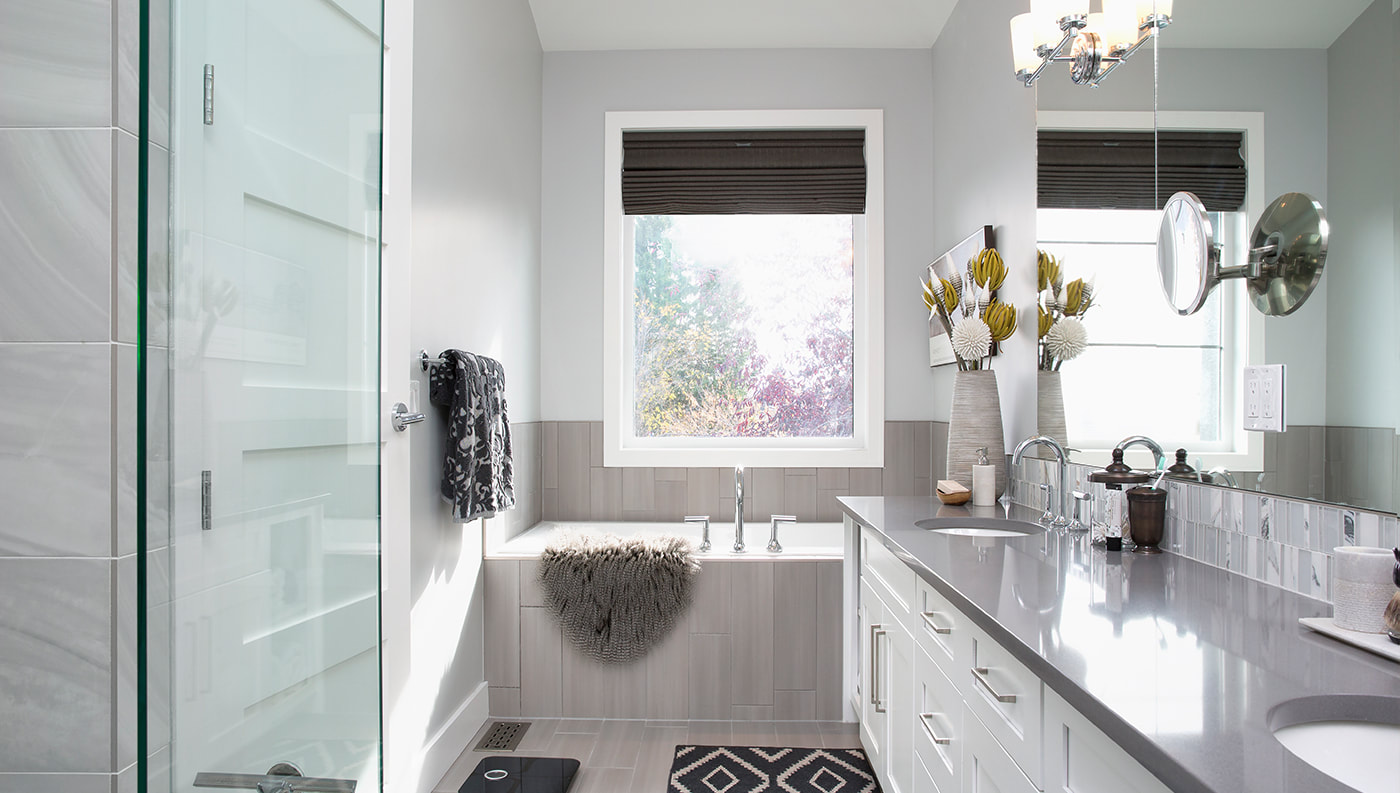

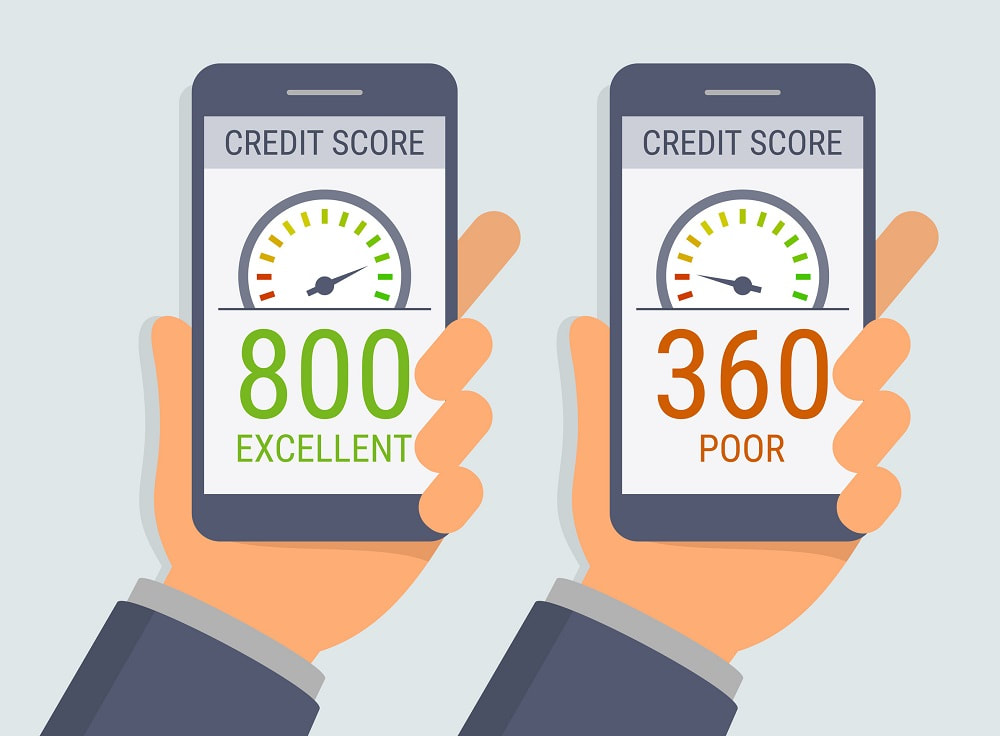

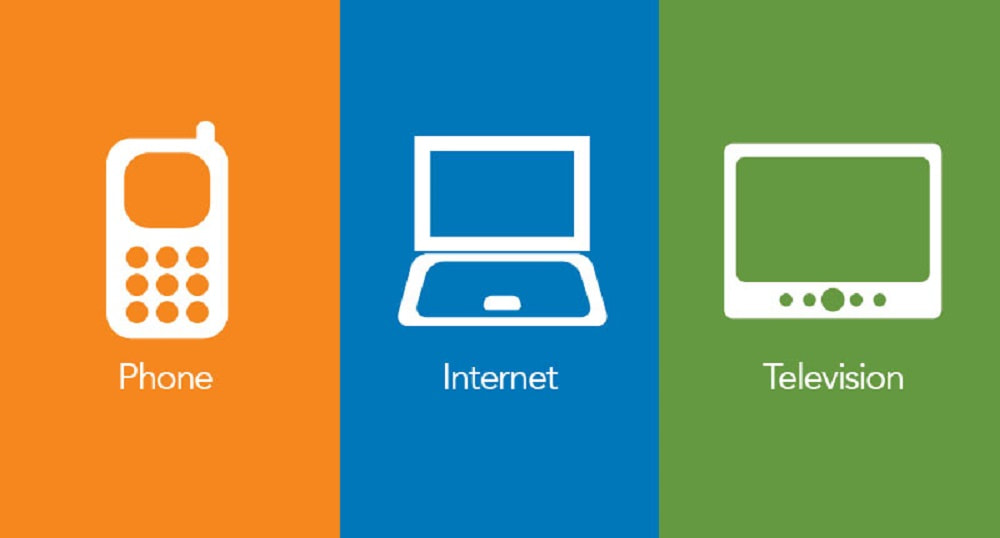



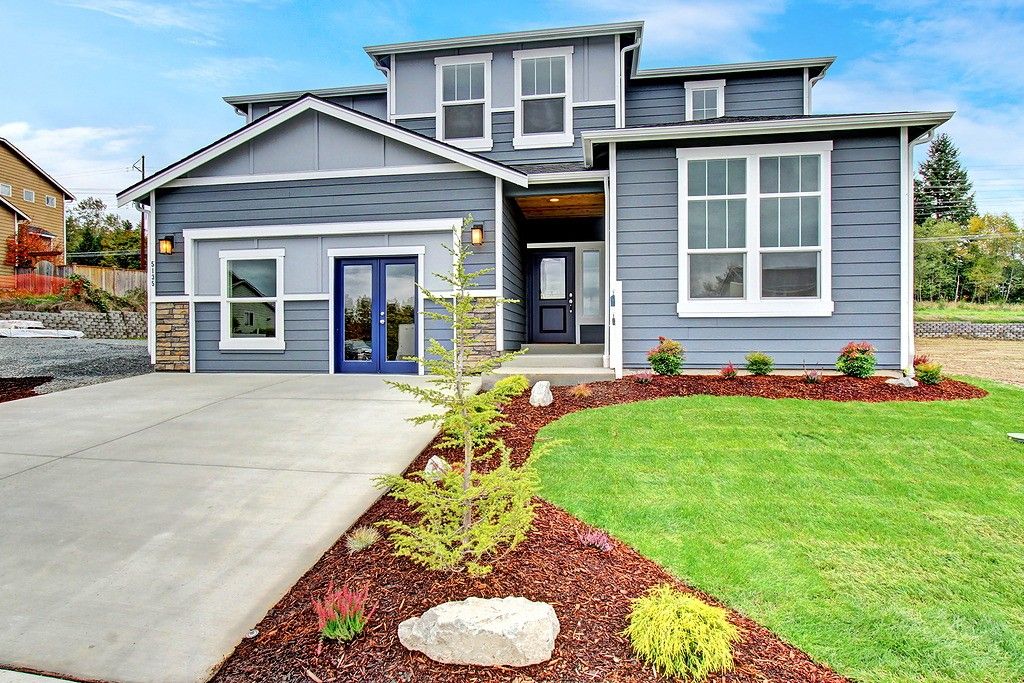

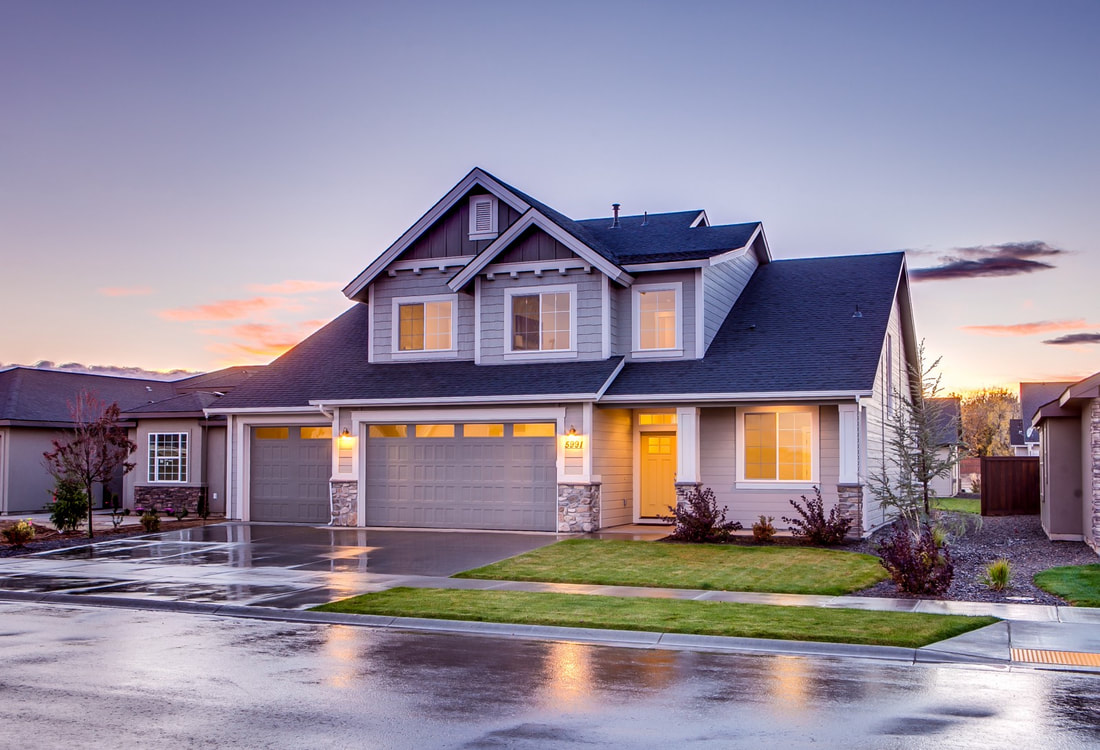







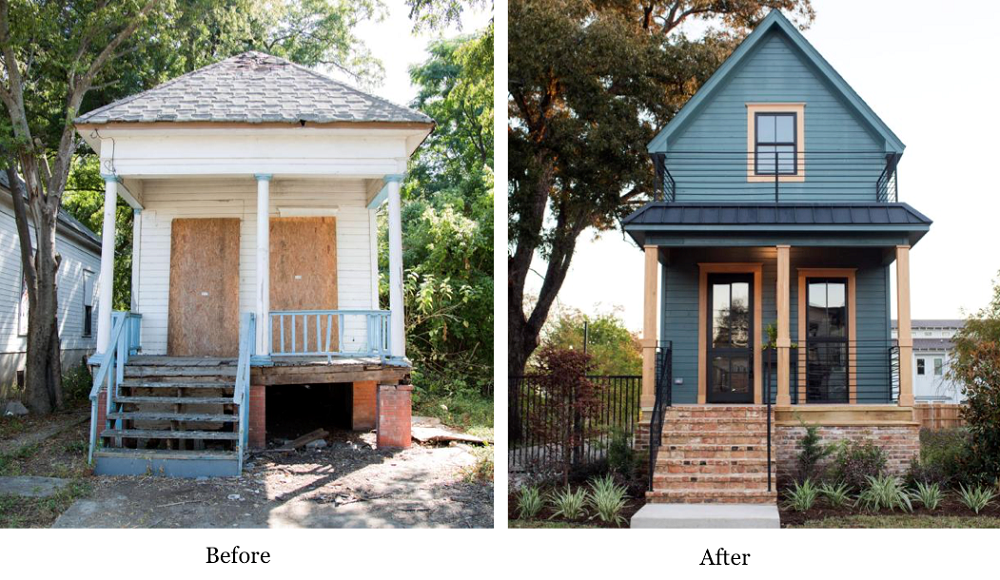

















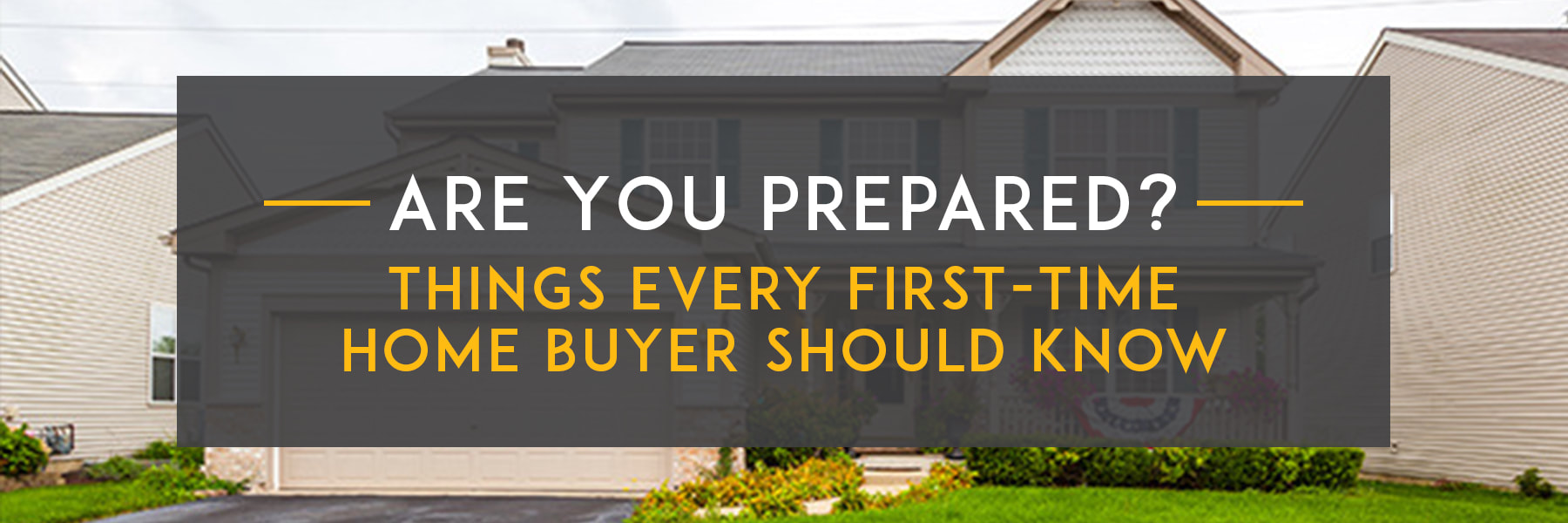

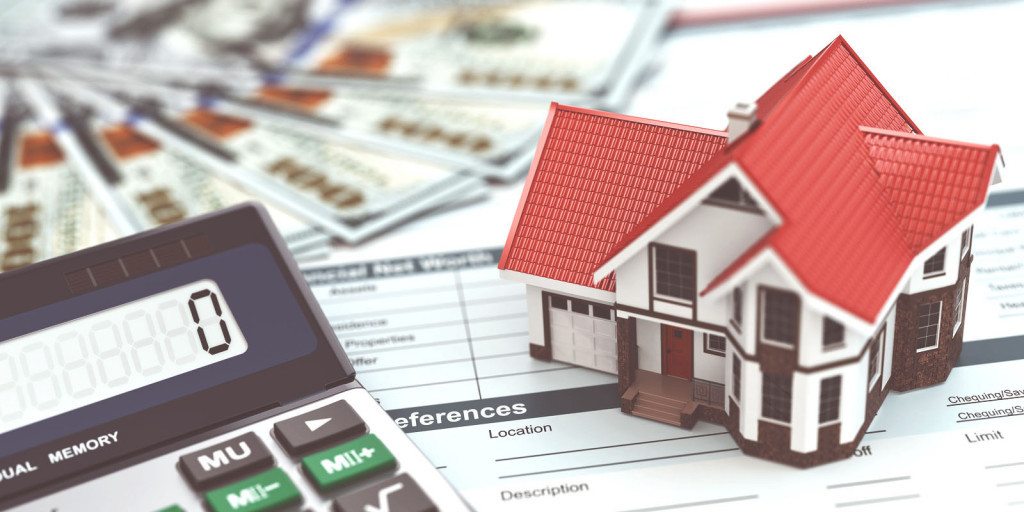



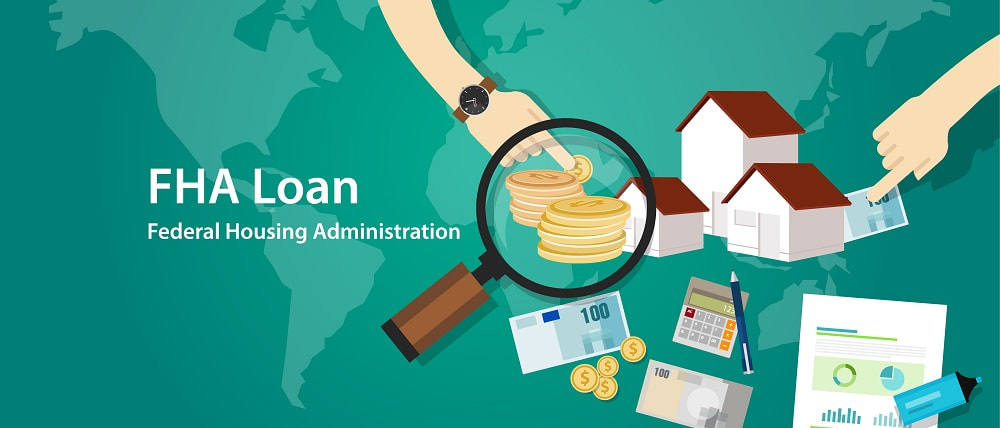





 RSS Feed
RSS Feed